 Previous Day |
Aztec → Cortez 179 mi (288.1 km) |
 Next Day |
Let’s get on the road to ruin, everyone!
That’s Aztec Ruins National Monument, to be precise! Though two disasters had pushed our visit to today, the morning could not have been more perfect for discovering this amazing UNESCO World Heritage site! The baby yeti we rescued was still in its protective cocoon, and Mom said it would be a couple of days before it recovered enough to emerge again. That gave us leave to explore!
 |
Like Montezuma Castle, Aztec Ruins National Monument was also misnamed by early American settlers. The Aztec never lived here, though they did export neat things like chocolate and macaw feathers up this way. This site, like most great houses of the American Southwest, belonged to the Ancestral Puebloan people, whose descendants still life in northern New Mexico and Arizona!
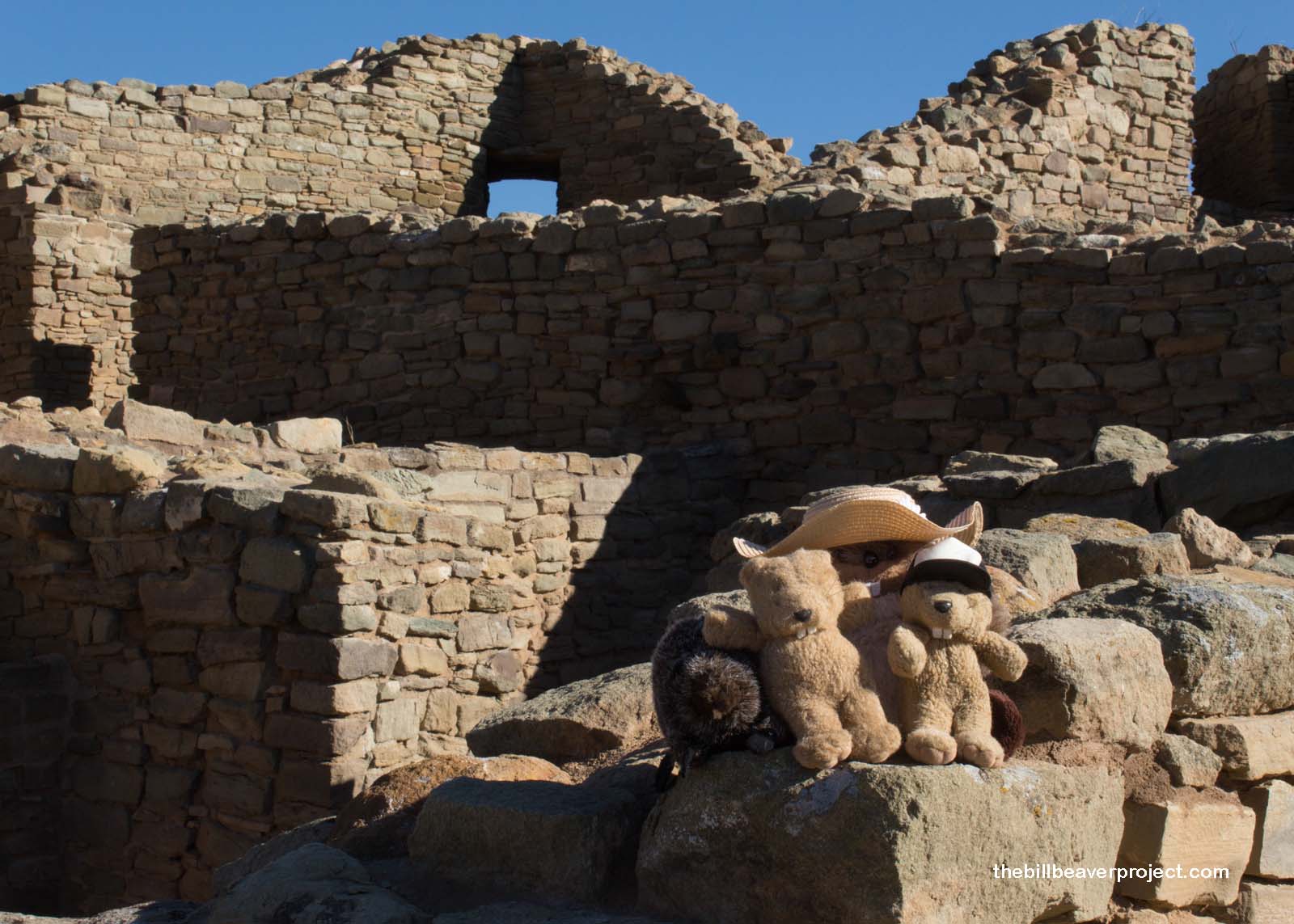 |
This park houses a very rare reconstructed Great Kiva! Most ruin visitors only know kivas as circular pits in the ground, but in 1934, Earl H. Morris supervised its restoration! It got new walls, a roof, and beautifully restored benches and fire pits, which makes the place feel as holy as it once was! Since I have rules about taking photos in holy places, if you want to see it in all its magnificence, you’ll have to visit this park yourself!
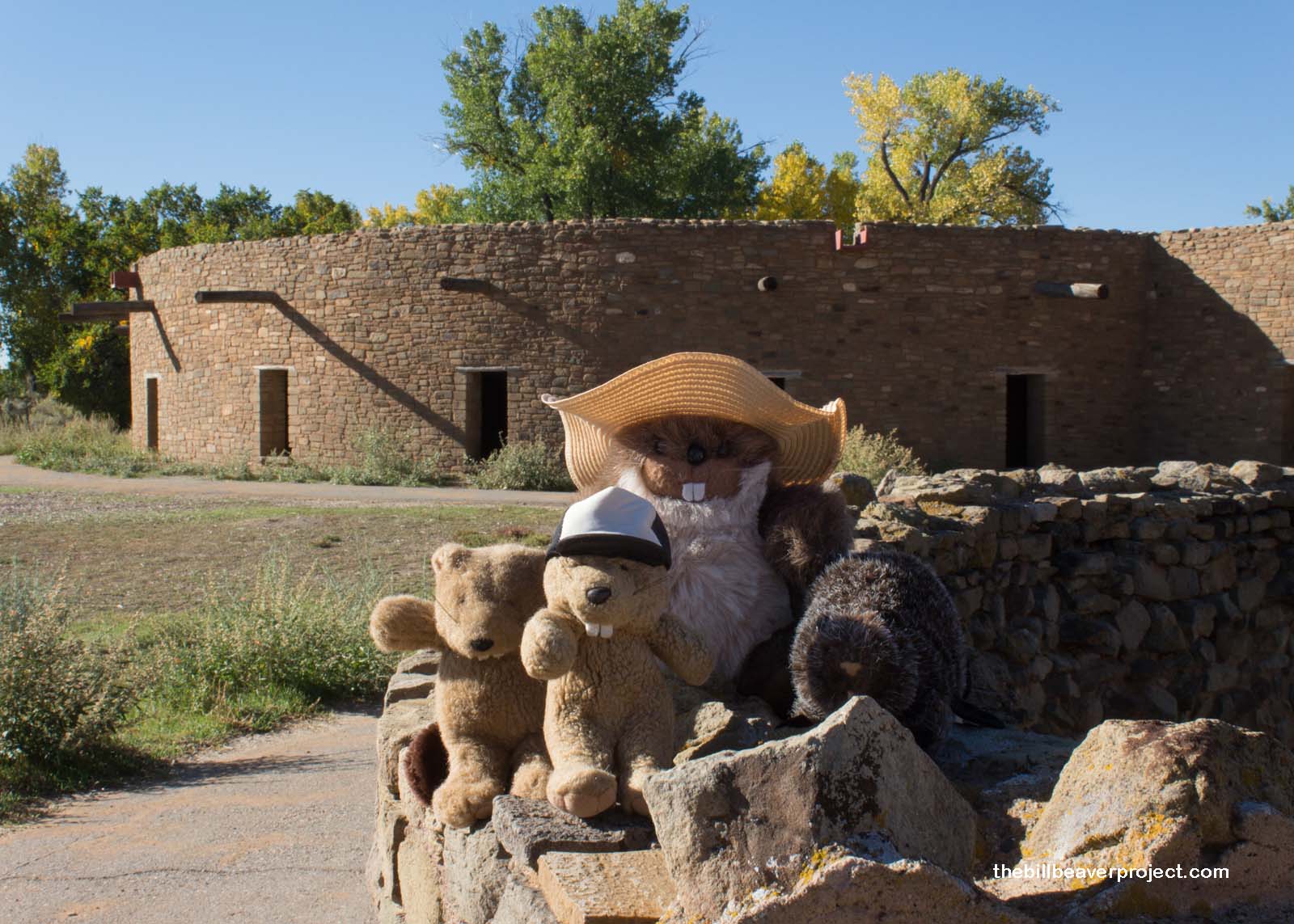 |
About as large as Chetro Ketl, the 400-room West Ruin has influences from both Chaco Canyon and Mesa Verde cultures. It was built around 1100 AD and was inhabited for two centuries, thanks to the steady supply of water from the Animas River! They got their stone from nearby rocky ledges and shaped them all without use of metal tools!
 |
Like other Ancestral Puebloan communities of the Southwest, this one was abandoned in the thirteenth century AD, left to the elements until its excavation in 1916. There are still many mysteries yet to be discovered here, but we would have to wait until those operations received the funding to become a reality.
 |
Instead, we headed west, past the mighty Shiprock to Four Corners Navajo Tribal Park, an odd setup no matter how you look at it. It’s the only park to straddle four states at once, but I thought it was odd for a tribal park to celebrate four states that were imposed on the tribe by the US government. It was designated in 1912, the year Arizona and New Mexico became states, and has grown into a large monument with flags and plaques, arts and crafts, and of course, lots of tourists.
This is such a highly visited spot that we had to wait in a line to get a photo (posted limit of three per person) while buffeted by wind gusts! While we did get our photo, one beaver per state, we all felt pretty underwhelmed by the experience, because, apart from browsing craft merchants, that was all there was to see here.
 |
So we motored our way north, back into Utah, where a much more interesting and complex park awaited us. Hovenweep National Monument is a collection of ancient structures balancing on top of sheer canyon walls in both Utah and Colorado. Most of the sites here were built after places like Chaco Canyon and Mesa Verde were abandoned, but why they chose this site remains an unsolved mystery!
 |
We decided to spend our time here wandering the 2-mile Rim Loop Trail overlooking a cluster of neat towers in the shallow canyon that gave this park its name. Hovenweep is a Ute/Paiute word meaning “deserted valley,” and was given to this area by photographer, William Henry Jackson, in 1874. There are nine ruins in this spot, each unique in shape and view!
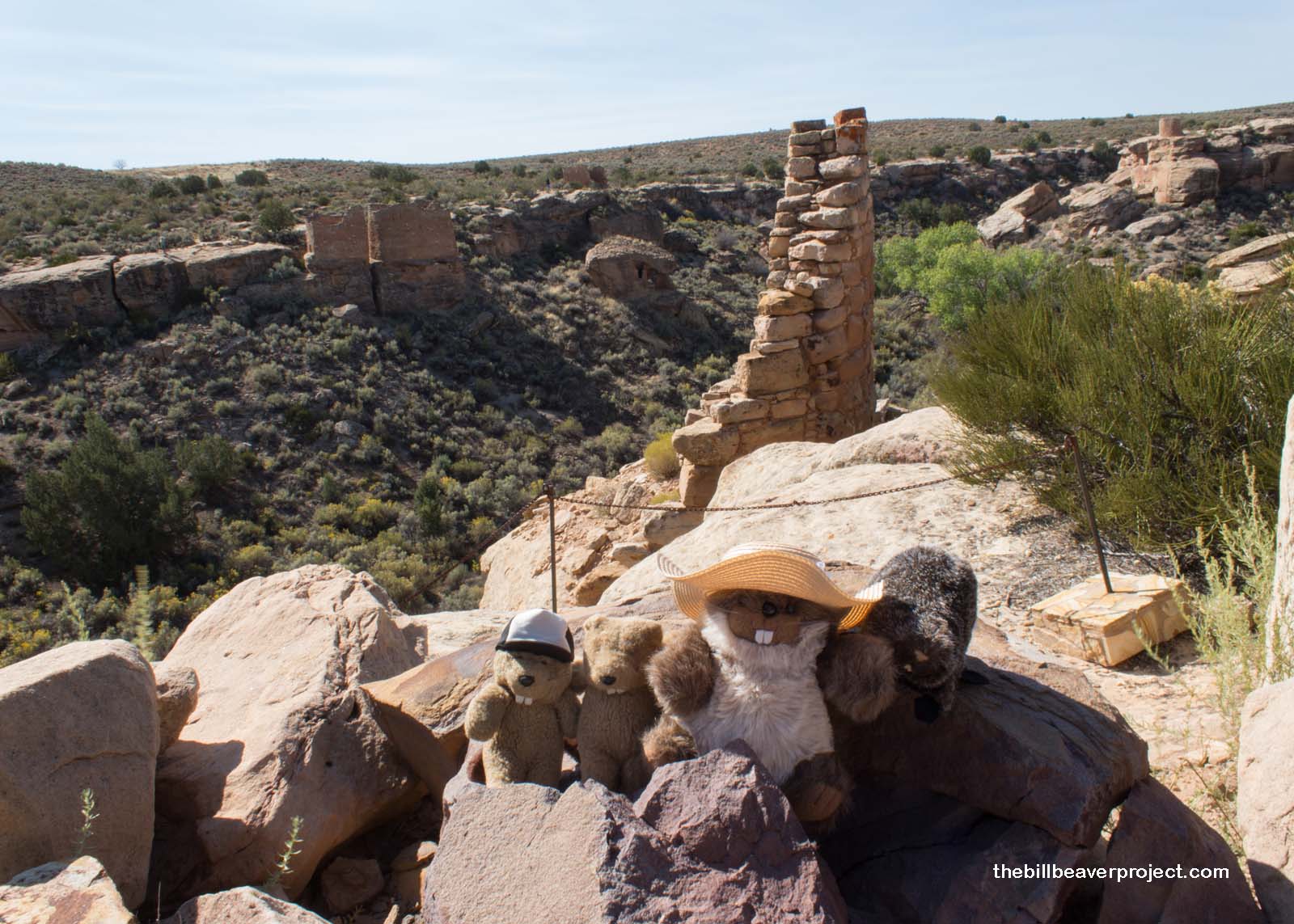 |
The hike itself was easy enough for Woodchuck to participate, so we went clockwise, down into the canyon and up the steep slope on the other side.
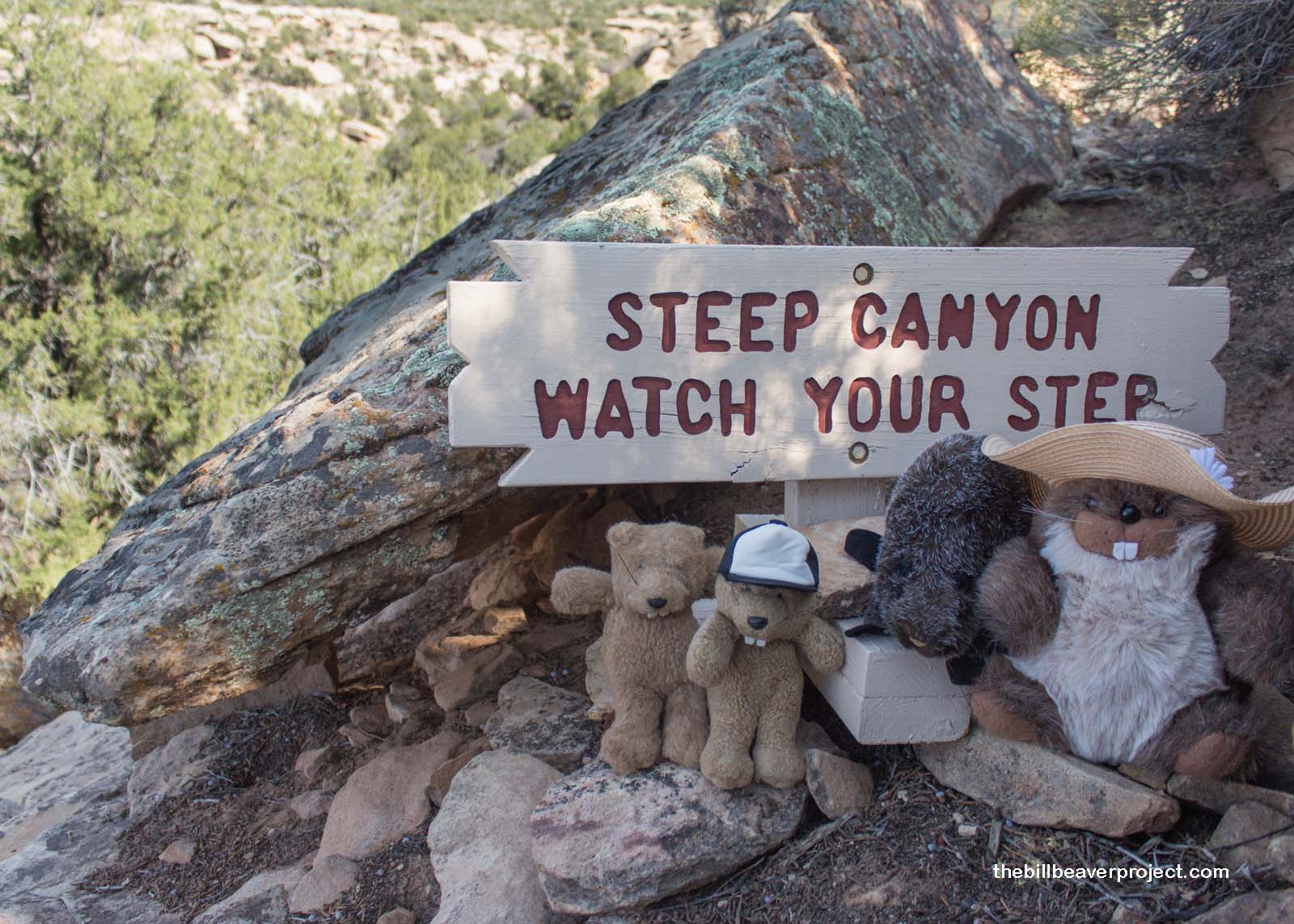 |
We first stopped at the Twin Towers, delicately balanced on the edge of Little Ruin Canyon. These towers originally housed 16 rooms and were some of the most delicately constructed buildings in the Southwest! Just looking at them, I was afraid a slight gust would send them toppling into the canyon!
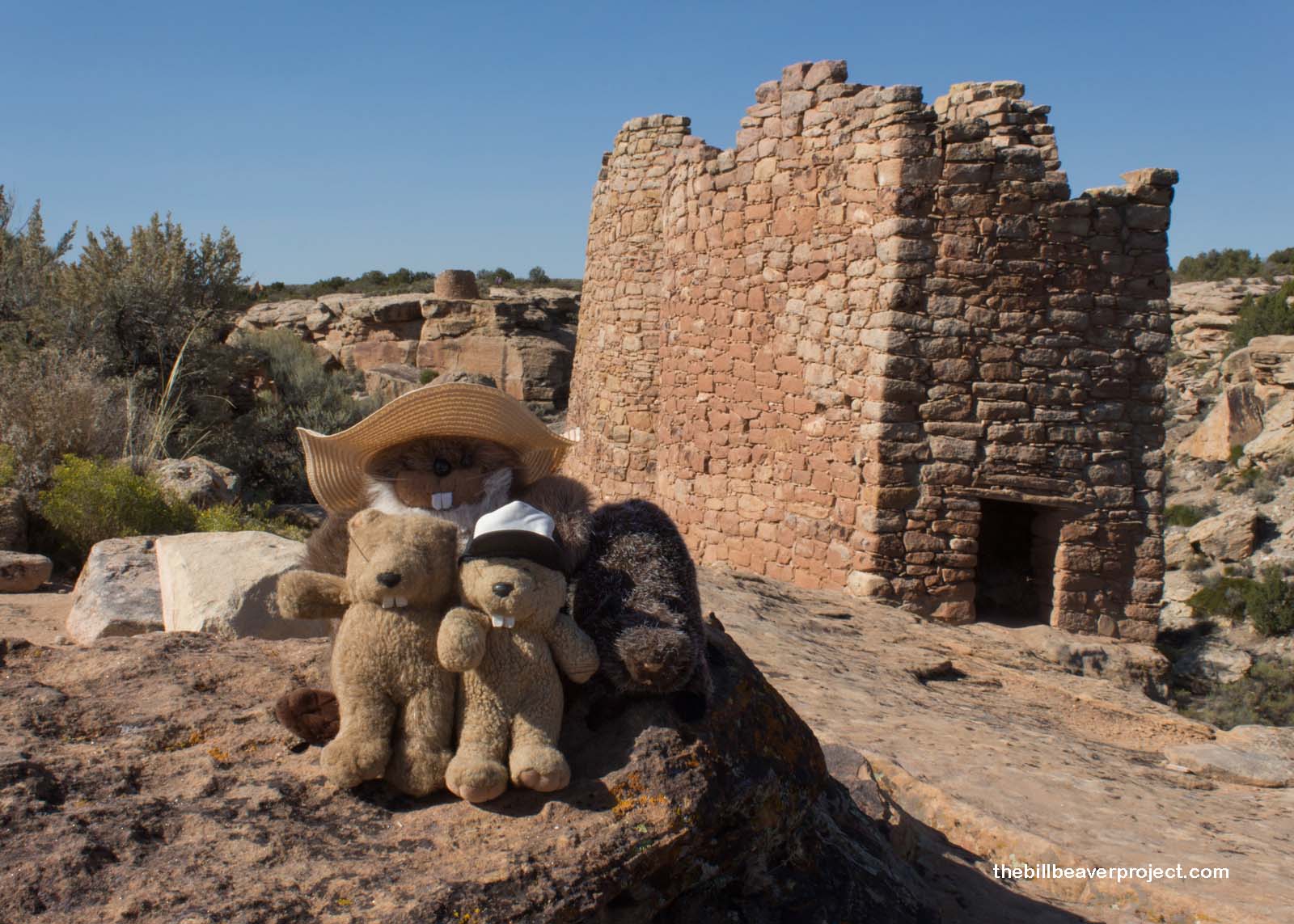 |
We rounded the canyon to behold the magnificent Hovenweep Castle! One of the newest buildings in the San Juan region, this incredible structure dates back to 1277 AD, thanks to matching tree rings in its supports with surrounding trees. Though this sure looked like a castle ruin, this two-story mansion was home to local farmers who really, really liked the view!
 |
 |
We wrapped up our circuit at Horseshoe Ruin at Tower Point, where we checked out ancient granaries and the very cool, but very distant, Eroded Boulder House, built, as you might imagine, into an eroded boulder! All of these buildings were stuck precariously on the edge, yet miraculously remained glued in time!
 |
As the sun got lower in the sky, we headed east into Colorado to take a peek at the most unusual national monument I’ve ever seen! Yucca House is a completely un-excavated ancient community buried, quite literally, in a farmer’s backyard! We wound down several country roads and pulled up in front of the farmer’s barn. No one asked us any questions or looked at us funny as we walked along the boardwalk across his yard and into the monument’s gate!
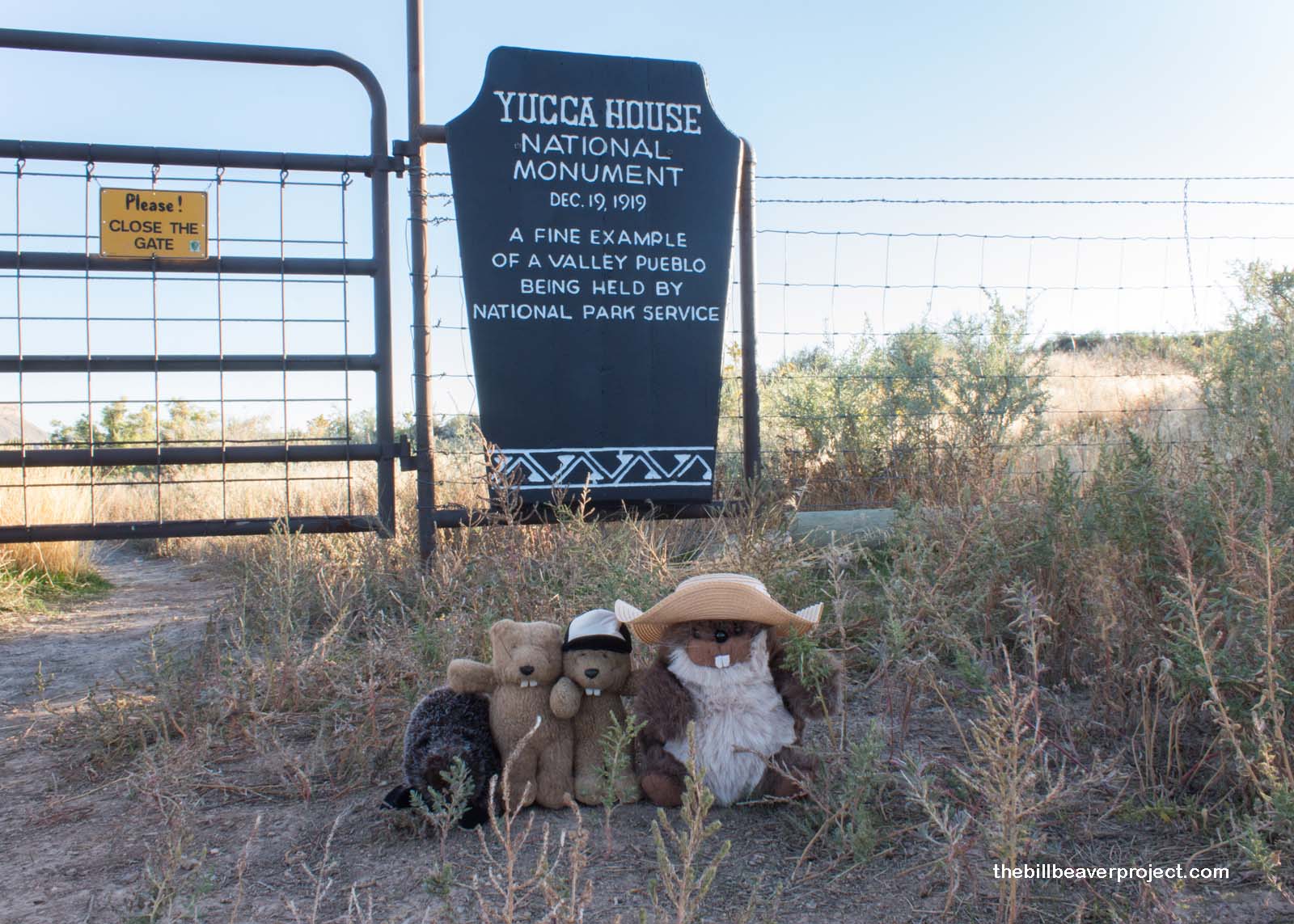 |
Just under the surface here lies one of southwest Colorado’s largest Native American communities, about as big as Pueblo Bonito in Chaco Canyon! Like Aztec Ruins, early archaeologists assumed this was another Aztec site, but again, it was built by the Ancestral Puebloan people! Though there are no yuccas growing here, the nearby mountain is known by the Ute as the “mountain with lots of yucca growing on it.”
 |
It’s unclear whether folks will ever be able to see Yucca House in its full grandeur, beyond the lone wall that’s been unearthed, but it was neat to imagine what wonders awaited us, just below the surface!
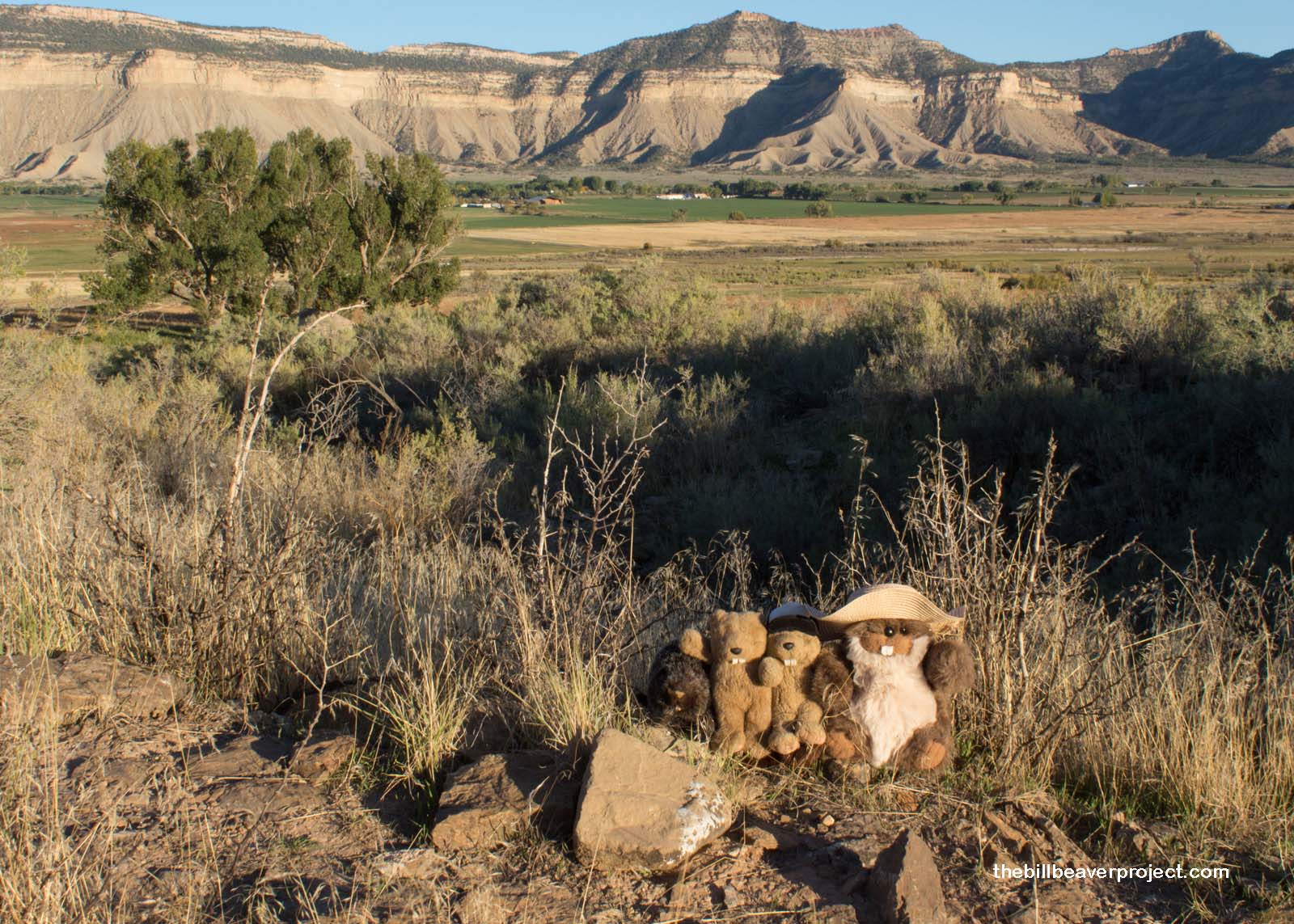 |
As the sun set, we motored into Cortez to set up camp at the local KOA. Here at the higher altitude, the air turned super chilly. Mom suggested we leave the baby yeti outside so the cold could work its magic. Tomorrow, we embark on the last leg of our family adventure, which makes me sad. We get together so infrequently that I have to remember to treasure every moment with my Mom and brothers.
Nobody puts beavers in a corner!

 Previous Day |
Aztec → Cortez 1,137.8 mi (1,831.1 km) |
 Next Day |
